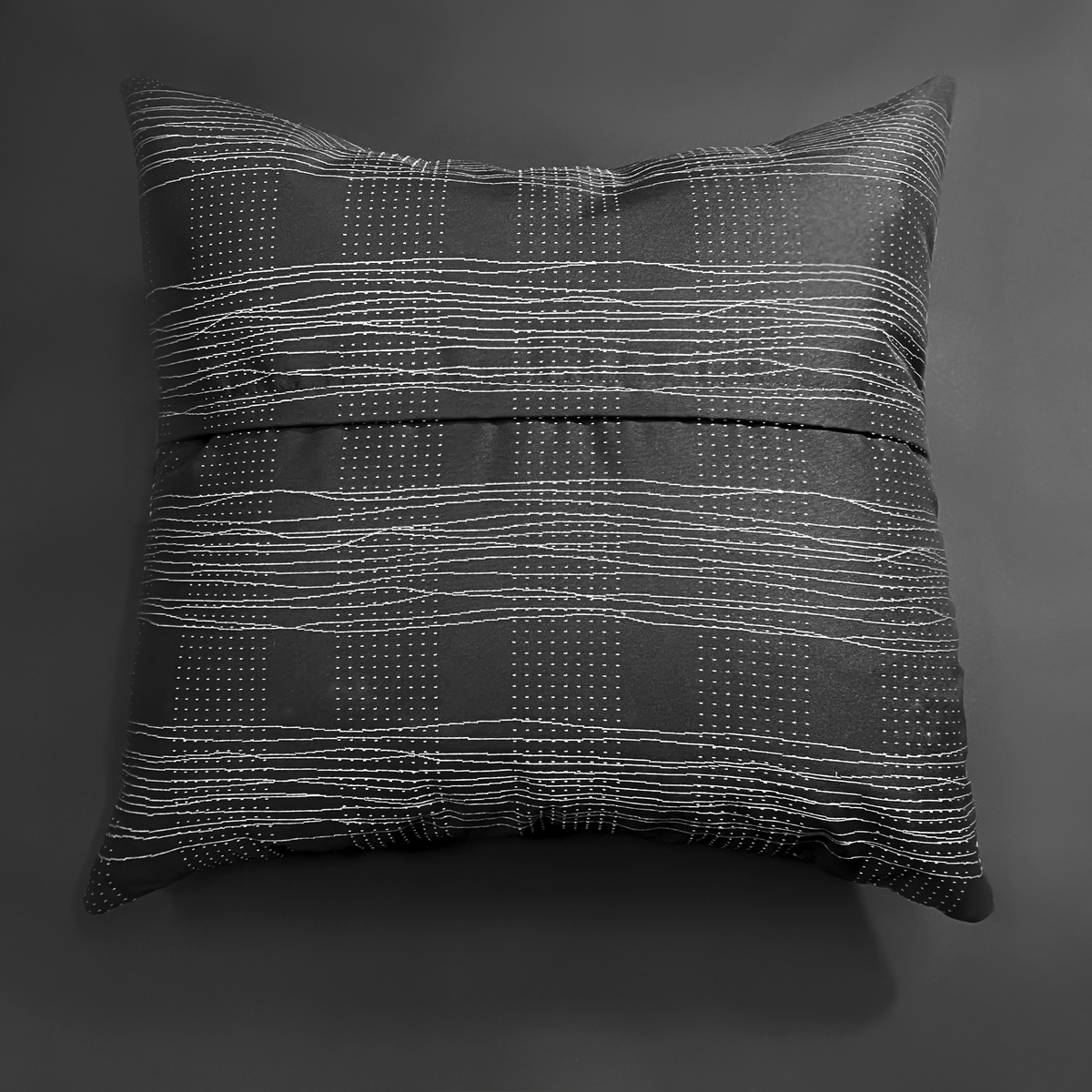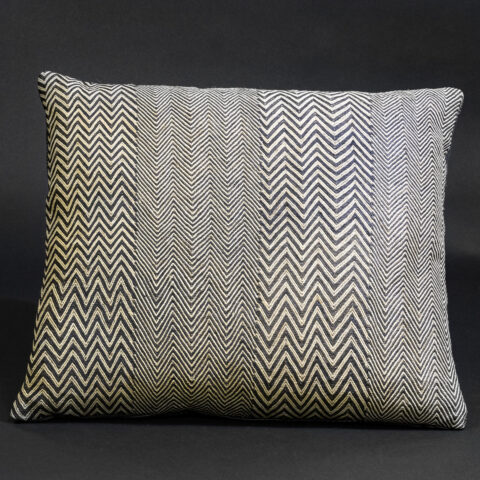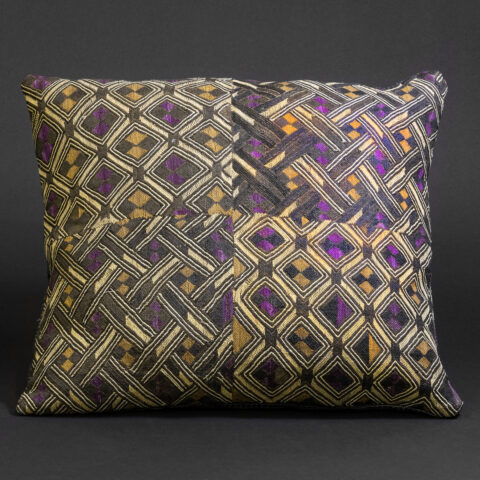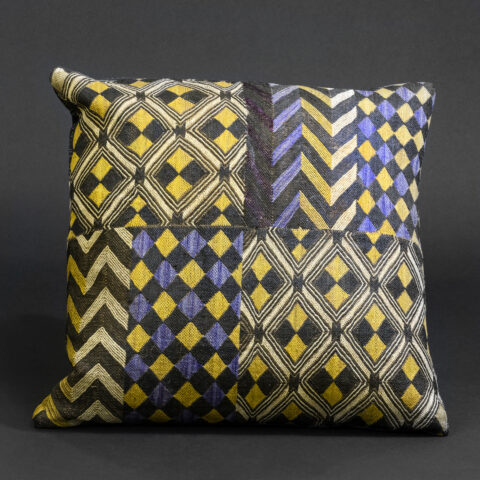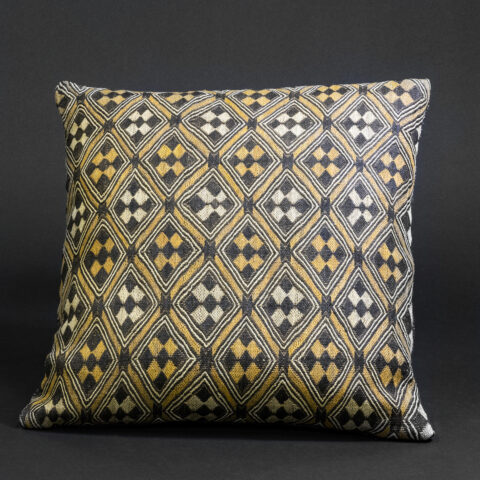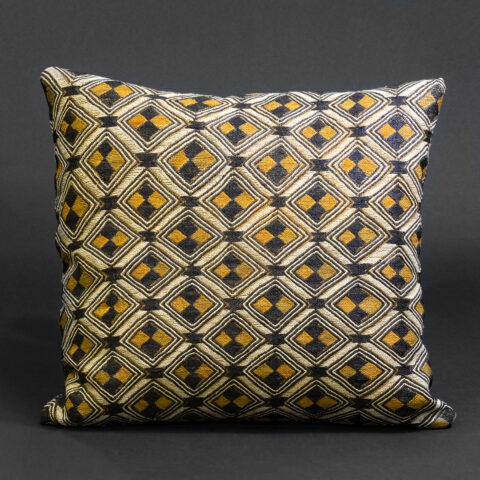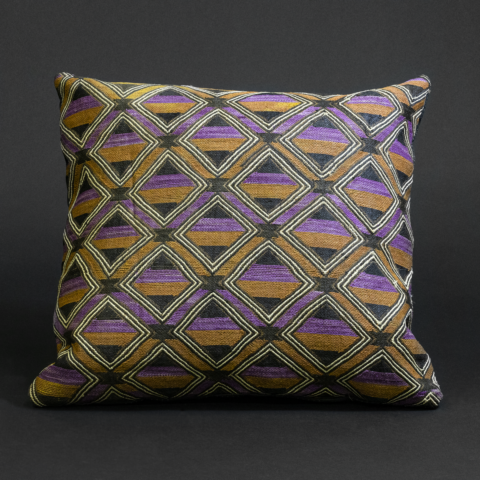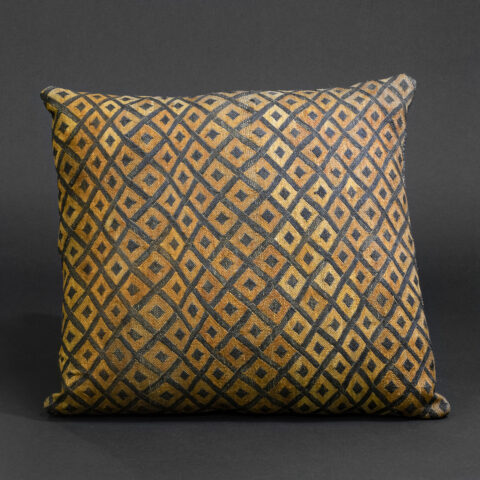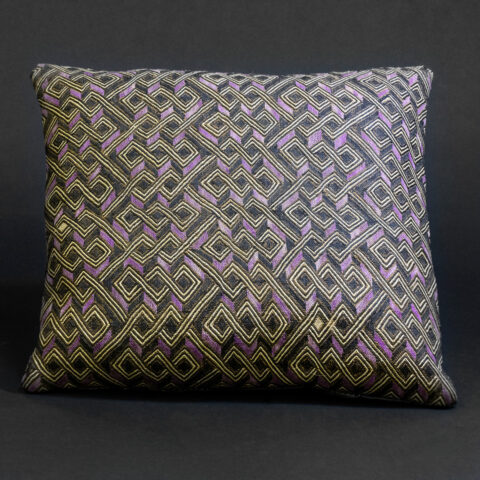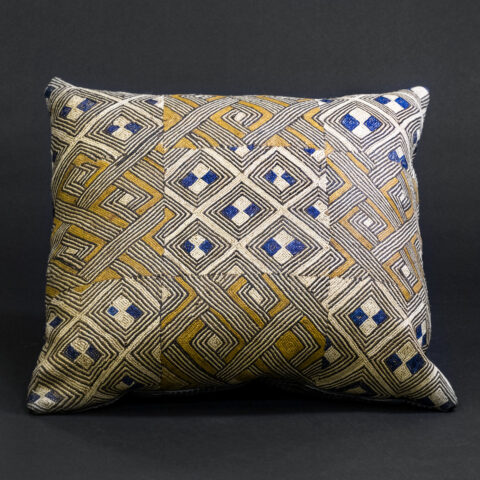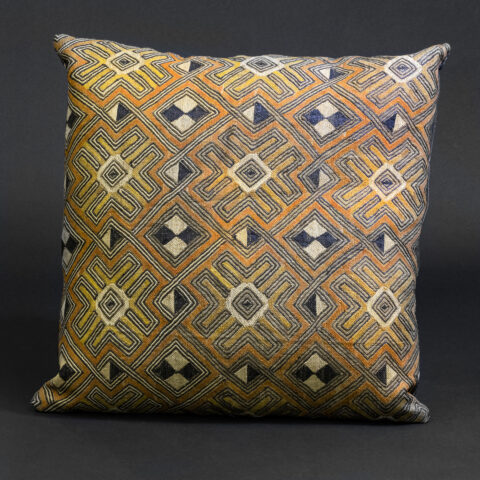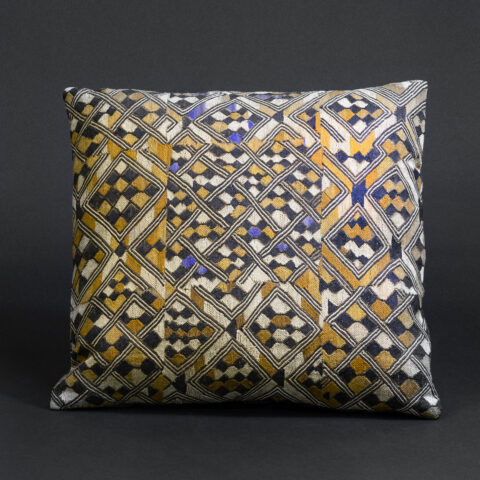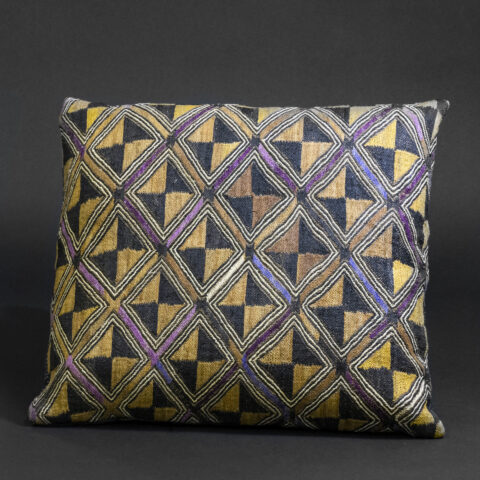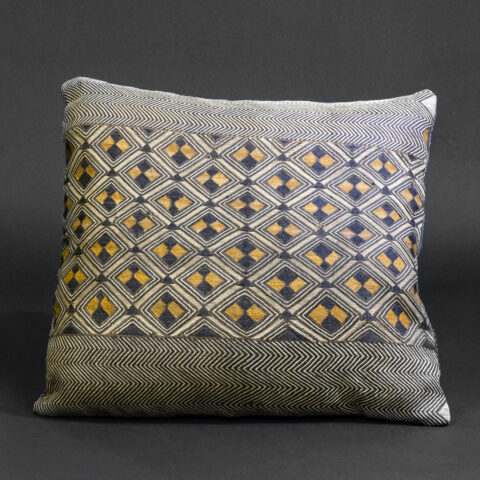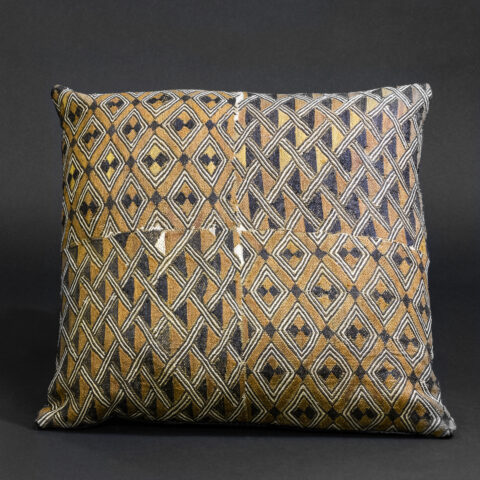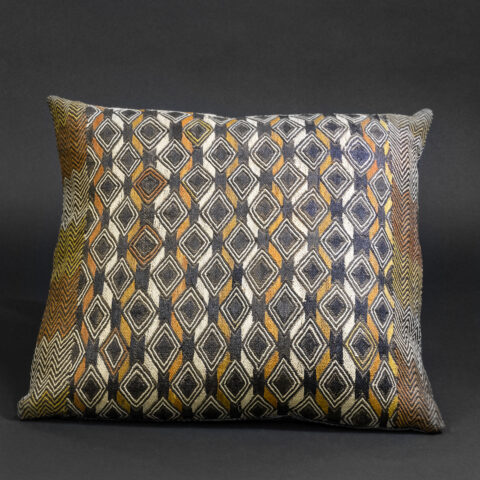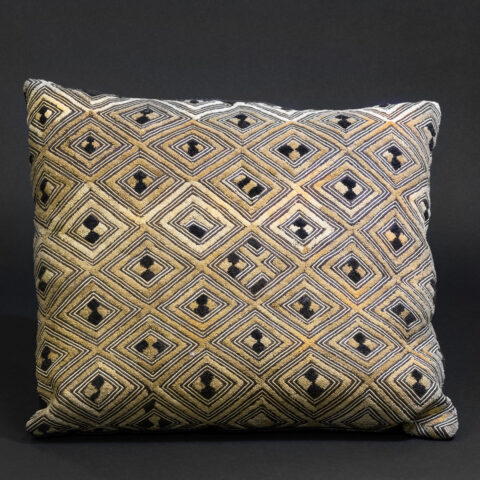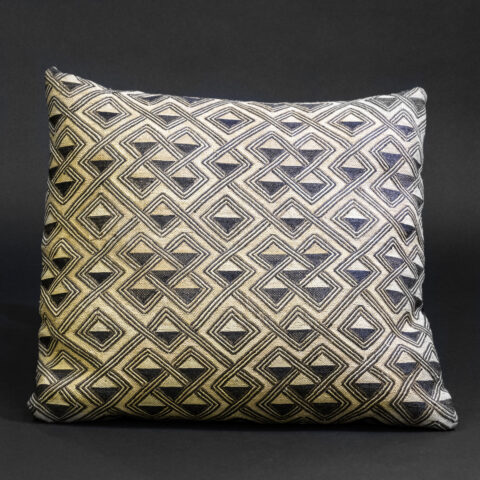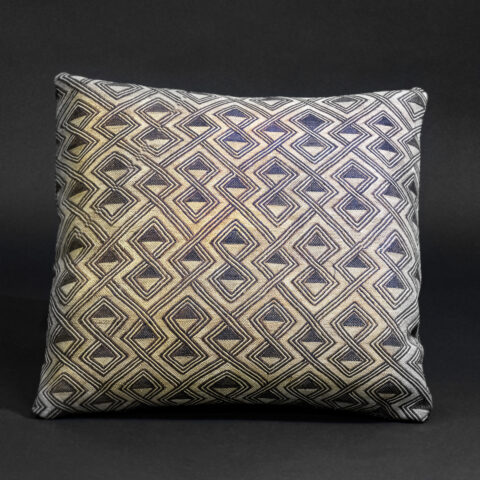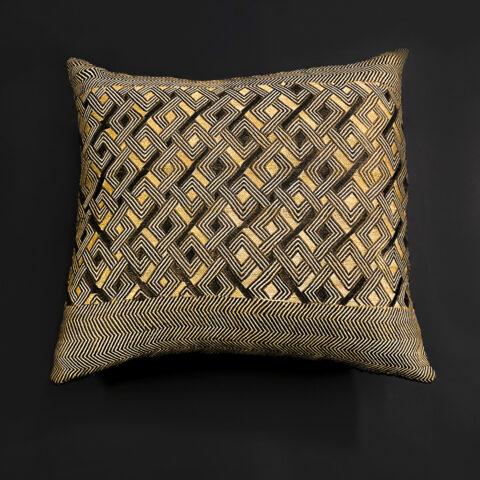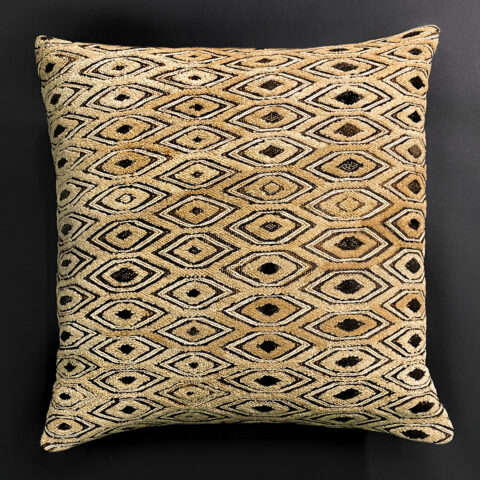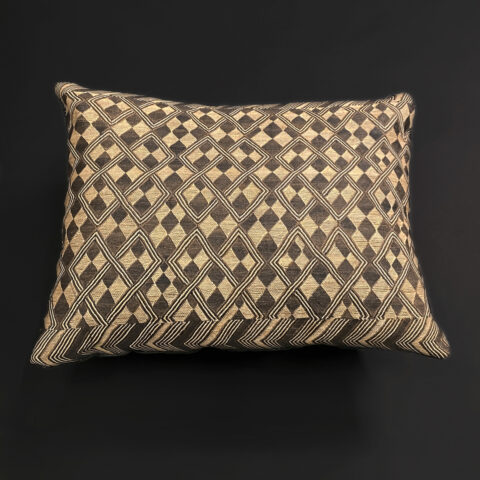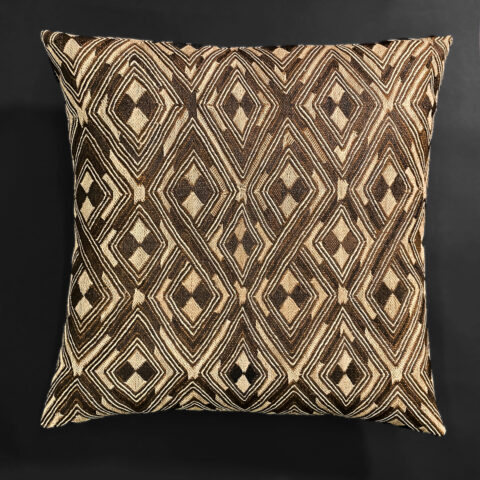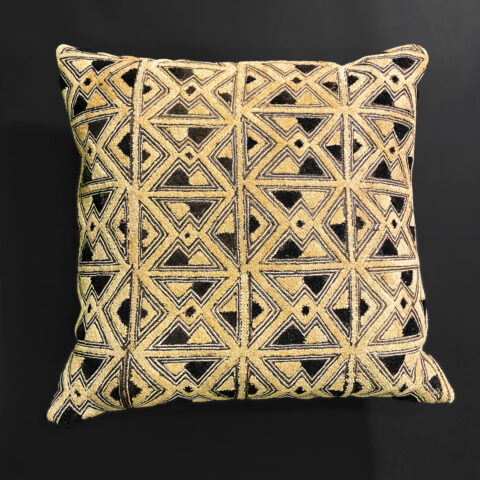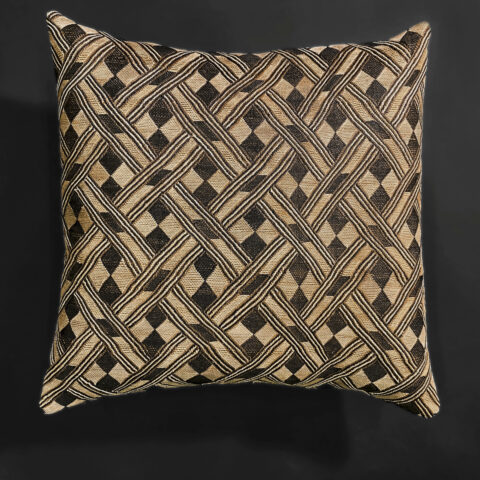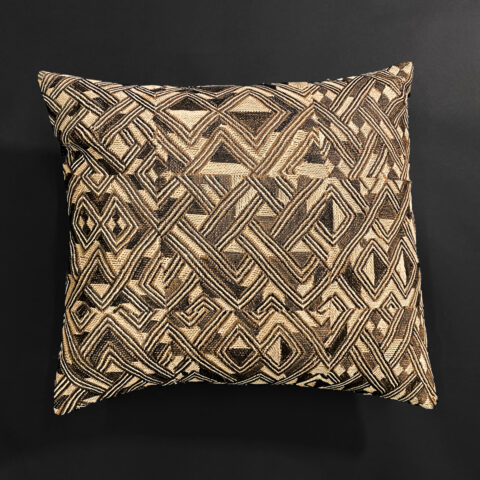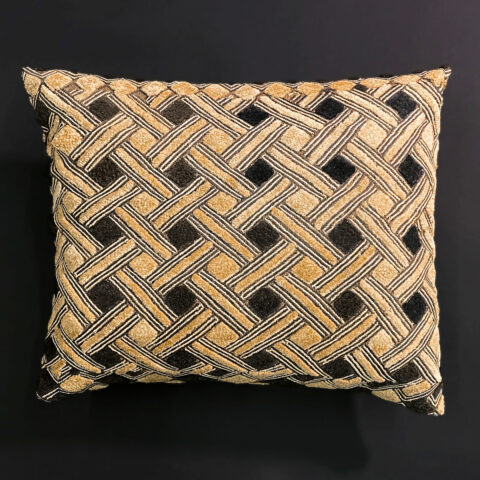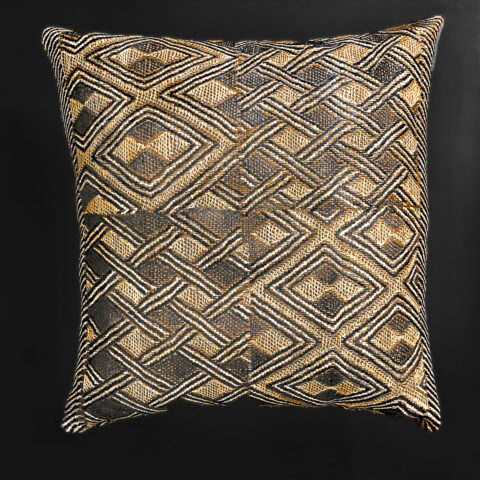Description
Densely layered, visually magnetic, and steeped in cultural resonance, the “Sacred Intersections” Raffia Pillow embodies the spirit of Kuba abstraction—a visual language where geometry becomes philosophy and fabric transforms into a vessel of meaning. This exceptional piece, handwoven and embroidered in the Democratic Republic of Congo, brings together multiple Kuba motifs in a striking patchwork arrangement, showcasing the depth and improvisational brilliance of a centuries-old textile tradition.
The pillow’s surface is alive with variation: nested diamonds (ikula), stepped pyramids, interlocking zigzags, and triangular tessellations—each referencing symbolic concepts within Kuba cosmology. The overlapping of these motifs suggests interconnected worlds: the visible and the invisible, the ancestral and the earthly, the individual and the collective. The arrangement celebrates Kuba visual rhythm, where perfection is found in deliberate asymmetry and harmony emerges from controlled chaos.
This textile originates from raffia palm fibers, softened through repeated hand-washing and woven by Kuba men using single-heddle looms. Kuba women, often the keepers of design memory, embroider the cloth using hand-stitching techniques that allow for layered complexity. The stark palette of matte black and natural ivory, derived from fermented vegetable dyes and iron-rich clays, evokes both bold modernism and timeless tradition.
Historically, cloths of this intricacy were worn by nobles, used in community rituals, and offered as gifts of high esteem. Under the visionary reign of King Shyaam a-Mbul a-Ngwo in the 17th century, Kuba textiles evolved into an elite art form—serving as currency, heritage record, and spiritual armor.
Now reimagined by NOA Living as a one-of-a-kind decorative pillow, “Sacred Intersections” transcends function to become a sculptural artifact for the contemporary home. It speaks to curators, collectors, and aesthetes who seek cultural depth, graphic clarity, and ethical craftsmanship in a single design statement.


